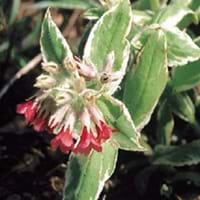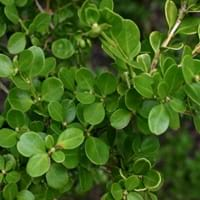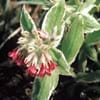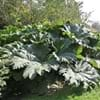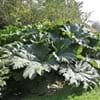Life Span
Perennial
Perennial
Type
Perennial
Broadleaf Evergreen
Origin
Europe
Hybrid origin
Types
Pulmonaria Bubble Gum , Pulmonaria ‘Polar Splash’ , Pulmonaria ‘Moonshine’
Buxus microphylla `Golden Triumph`
Buxus microphylla Herrenhausen'
Buxus microphylla `Henry Hohman
Buxus microphylla `John Baldwin`
Buxus microphylla var. japonica
Buxus microphylla var. japonica `Faulkner`
Habitat
Alpine Meadows
Wild
USDA Hardiness Zone
4-8
5-9
AHS Heat Zone
8-3
Not Available
Sunset Zone
1a, 1b, 2a, 2b, 3a, 3b, 4, 5, 6, 7, 8, 9, 14, 15, 16, 17
21,22
Habit
Cushion/Mound-forming
Oval or Rounded
Flower Color
Red, Salmon, Coral
Yellow green
Flower Color Modifier
Not Available
Bicolor
Fruit Color
Non Fruiting Plant
Not Available
Leaf Color in Spring
Dark Green
Green
Leaf Color in Summer
Dark Green
Dark Green
Leaf Color in Fall
Dark Green
Dark Green
Leaf Color in Winter
Light Green
Olive, Dark Green, Bronze
Leaf Shape
Lanceolate
Elliptic
Plant Season
Spring, Summer, Fall
Spring, Summer, Fall, Winter
Sunlight
Partial Sun, Partial shade, Full Shade
Full Sun, Partial Sun
Type of Soil
Clay, Loam
Loam, Sand
The pH of Soil
Acidic, Neutral, Alkaline
Acidic, Neutral
Soil Drainage
Average
Well drained
Bloom Time
Early Spring, Spring, Late Winter
Late Spring
Tolerances
Drought, Rocky Soil
Not Available
Where to Plant?
Ground, Pot
Ground
How to Plant?
Divison
Leaf Cutting, Stem Cutting, stem tip cuttings
Plant Maintenance
Medium
Medium
Watering Requirements
Keep ground moist, Keep the Soil well drained
Do not water frequently
In Summer
Lots of watering
Lots of watering
In Spring
Moderate
Moderate
In Winter
Average Water
Average Water
Soil pH
Acidic, Neutral, Alkaline
Acidic, Neutral
Soil Type
Clay, Loam
Loam, Sand
Soil Drainage Capacity
Average
Well drained
Sun Exposure
Partial Sun, Partial shade, Full Shade
Full Sun, Partial Sun
Pruning
Prune after flowering, Remove damaged leaves, Remove dead branches, Remove dead leaves
Remove damaged leaves, Remove dead branches, Remove dead leaves
Fertilizers
All-Purpose Liquid Fertilizer, Compost
All-Purpose Liquid Fertilizer
Pests and Diseases
Pest Free, Powdery mildew
Red blotch
Plant Tolerance
Drought, Rocky Soil
Drought
Flowers
Showy
Insignificant
Flower Petal Number
Single
Single
Foliage Texture
Medium
Fine
Foliage Sheen
Matte
Glossy
Attracts
Hummingbirds
Caterpillar, Early/Late Blight, Mites, Spider Mites
Allergy
Unknown
Eye irritation, Skin irritation
Aesthetic Uses
Borders, Informal Hedge, Ornamental use, Showy Purposes, Woodland margins
Not Used For Aesthetic Purpose
Beauty Benefits
Not Available
Not Available
Environmental Uses
Air purification
Air purification
Medicinal Uses
No Medicinal Use
Not Available
Part of Plant Used
Not Available
Not Available
Other Uses
Unknown
Not Available
Used As Indoor Plant
Yes
No
Used As Outdoor Plant
Yes
Yes
Garden Design
Edging, Groundcover, Mixed Border, Rock Garden / Wall
Container, Edging, Foundation, Hedges, Rock Garden, Wall, Topiary, Bonsai, Espalier
Botanical Name
PULMONARIA rubra 'David Ward'
BUXUS microphylla var japonica
Common Name
David Ward, Red Lungwort
Japanese box
littleleaf box
In Hindi
david ward
Japanese Boxwood
In German
david ward
Japanese Boxwood
In French
david ward
Boxwood japonaise
In Spanish
david ward
El boj japonés
In Greek
david ward
Ιαπωνικά Πυξάρι
In Portuguese
david ward
Boxwood japonês
In Polish
david ward
japoński Bukszpan
In Latin
david ward
Boxwood Italica
Phylum
Tracheophyta
Tracheophyta
Class
Magnoliopsida
Magnoliopsida
Family
Boraginaceae
Buxaceae
Clade
Not Available
Angiosperms, Eudicots
Tribe
Not Available
Not Available
Subfamily
Not Available
Not Available
Number of Species
Not Available
Season and Care of David Ward and Japanese Boxwood
Season and care of David Ward and Japanese Boxwood is important to know. While considering everything about David Ward and Japanese Boxwood Care, growing season is an essential factor. David Ward season is Spring, Summer and Fall and Japanese Boxwood season is Spring, Summer and Fall. The type of soil for David Ward is Clay, Loam and for Japanese Boxwood is Loam, Sand while the PH of soil for David Ward is Acidic, Neutral, Alkaline and for Japanese Boxwood is Acidic, Neutral.
David Ward and Japanese Boxwood Physical Information
David Ward and Japanese Boxwood physical information is very important for comparison. David Ward height is 25.40 cm and width 81.30 cm whereas Japanese Boxwood height is 90.00 cm and width 90.00 cm. The color specification of David Ward and Japanese Boxwood are as follows:
David Ward flower color: Red, Salmon and Coral
David Ward leaf color: Dark Green
Japanese Boxwood flower color: Yellow green
- Japanese Boxwood leaf color: Green
Care of David Ward and Japanese Boxwood
Care of David Ward and Japanese Boxwood include pruning, fertilizers, watering etc. David Ward pruning is done Prune after flowering, Remove damaged leaves, Remove dead branches and Remove dead leaves and Japanese Boxwood pruning is done Remove damaged leaves, Remove dead branches and Remove dead leaves. In summer David Ward needs Lots of watering and in winter, it needs Average Water. Whereas, in summer Japanese Boxwood needs Lots of watering and in winter, it needs Average Water.
